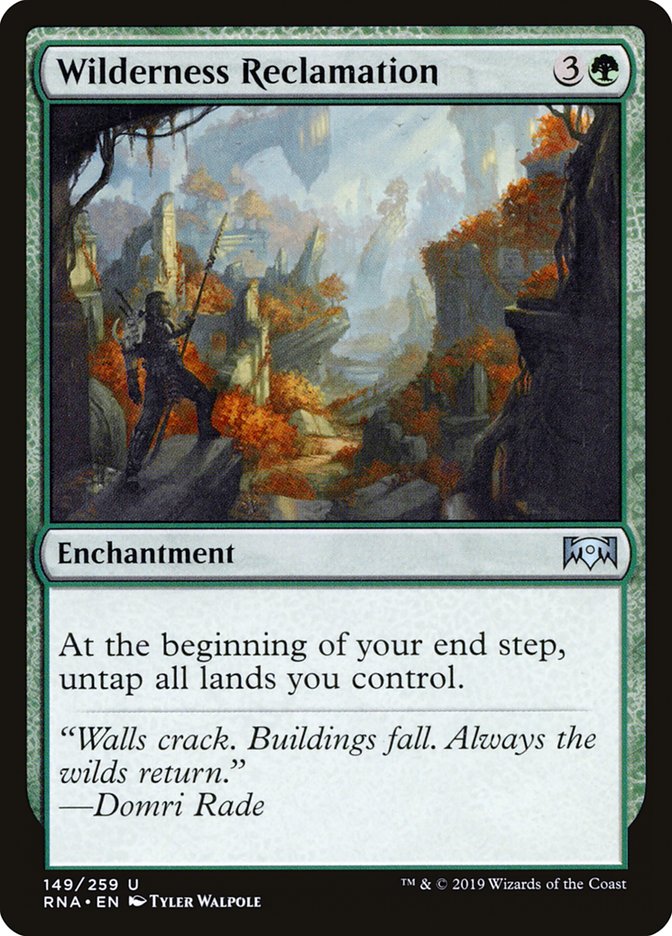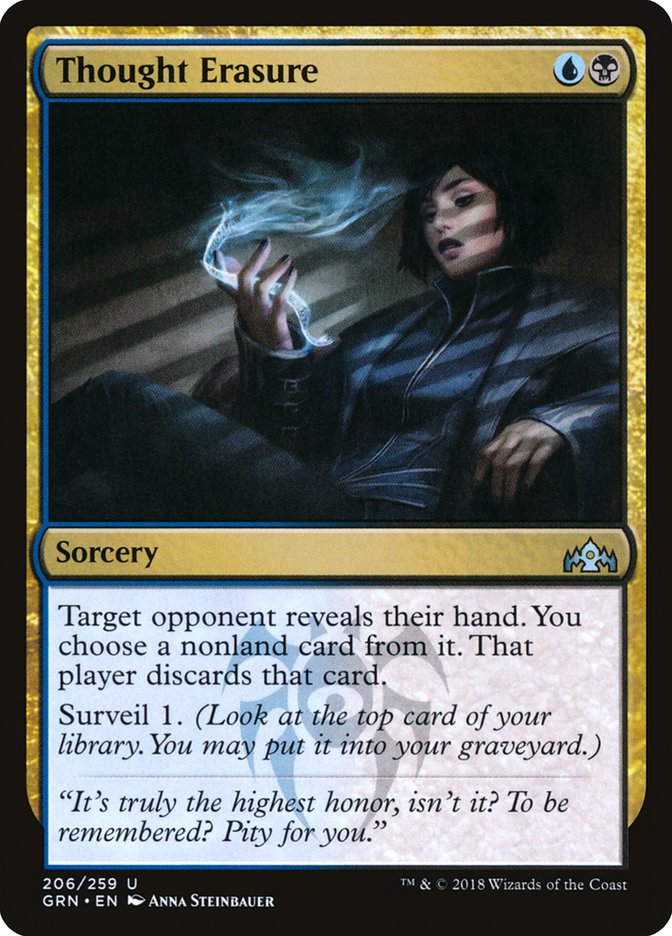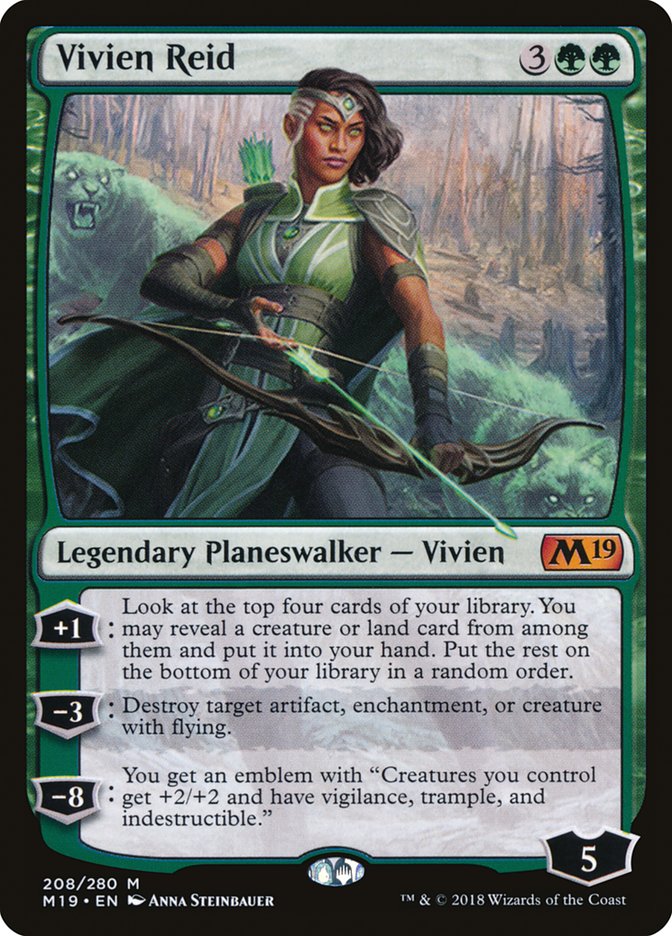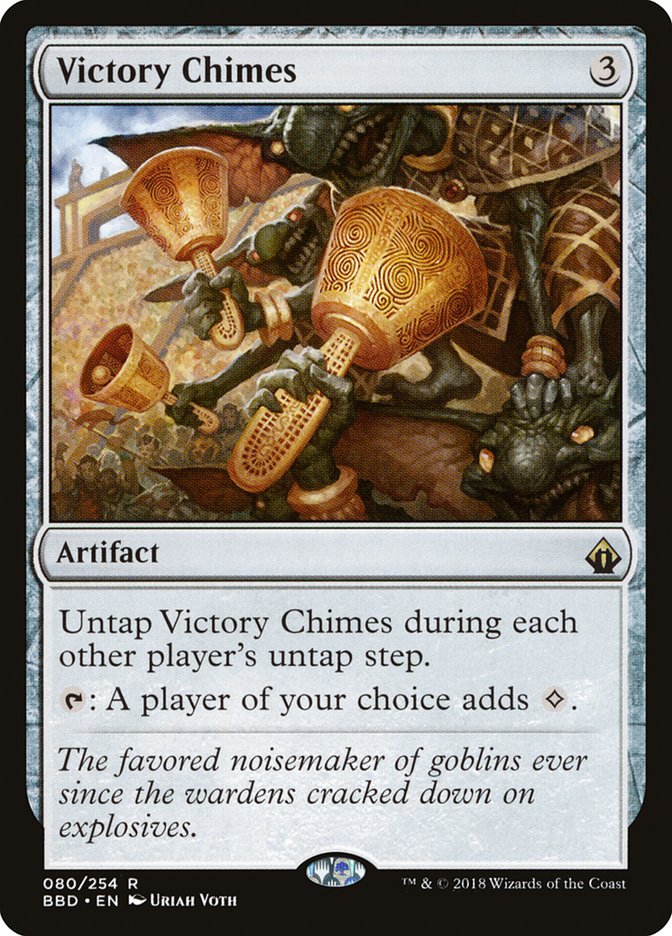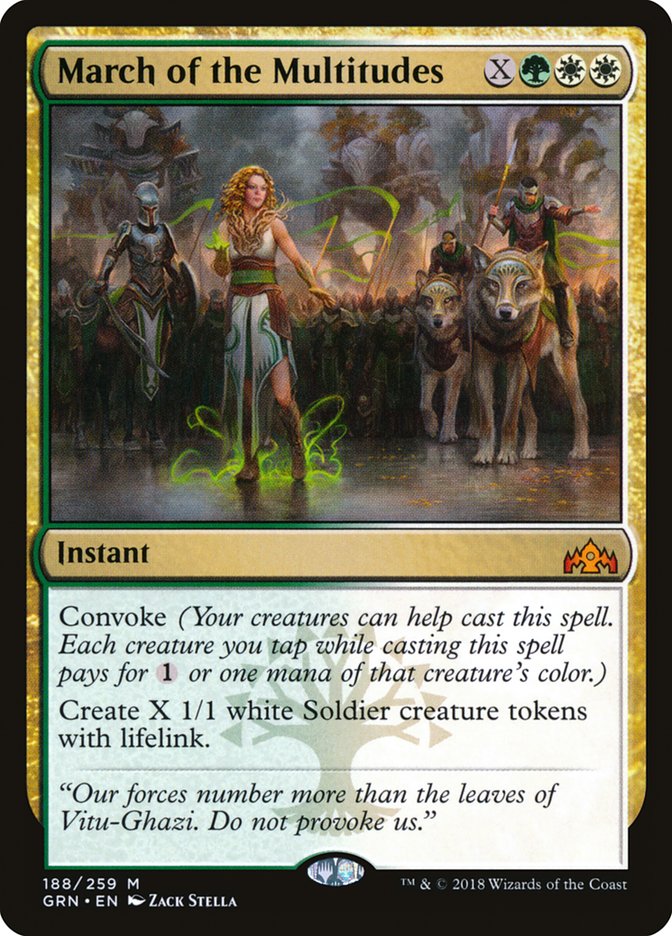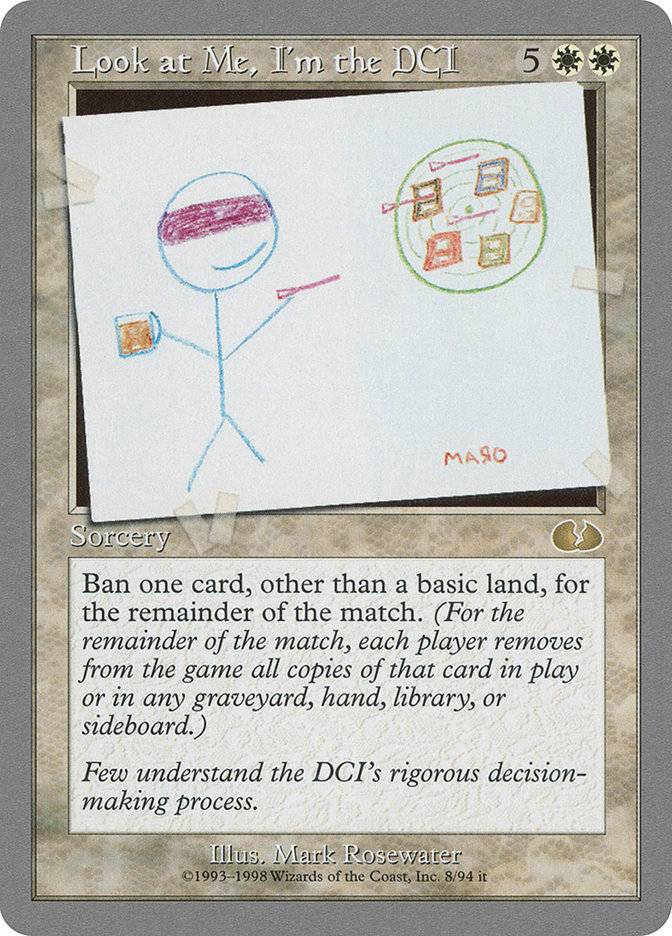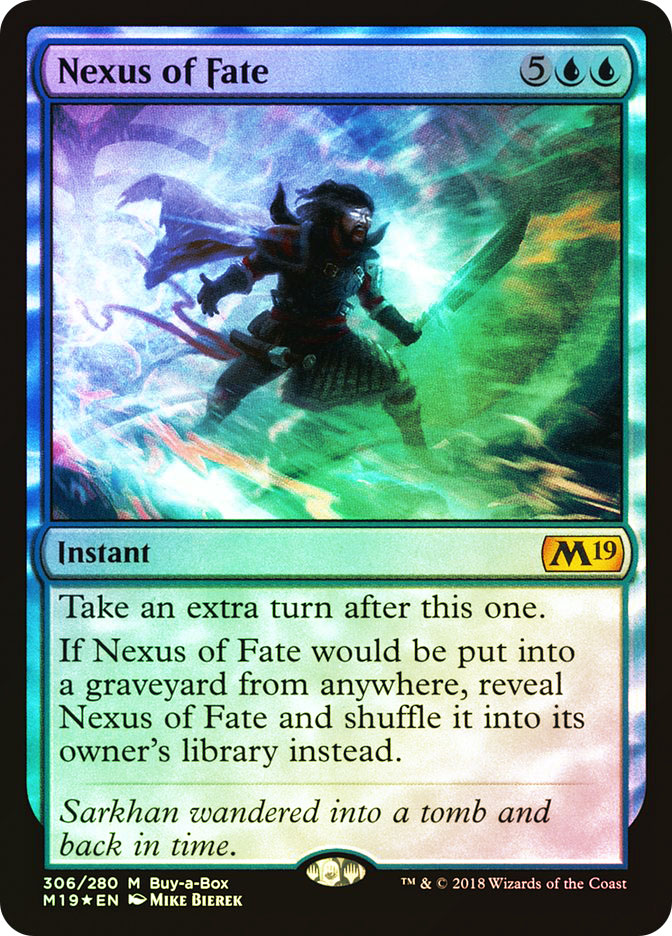I was on the record criticizing Wilderness Reclamation the day it was previewed. My good friend Ali Aintrazi believed it to be the essence of greatness, where I deemed it a do-nothing dud. Although I doubt either of us was spot on that day, it will end its time in Standard closer to a bust than boom. The four-mana enchantment has the makings of a busted Magic card in another time. Before creatures were twice as good as spells, Wilderness Reclamation would have dominated the world. There have been effects like it in the past, but none quite as good as this one.
Spells that don’t directly impact the battlefield are held to a higher standard in this new world we live in. Whenever you tap all your lands starting very early in the game, you’d better hope it’s pressure, an answer, or something to replenish your depleted hand. There are obvious exceptions to this rule, but that empirically proves this higher standard. Cards that don’t generally advance you toward victory have to be so good that decks form around them, which is what Wilderness Reclamation forces deck builders to do.
There still isn’t an optimal Wilderness Reclamation list released to the public, but that may change this weekend in Memphis.
Having a Standard Grand Prix a week prior to the Mythic Championship is a big deal, because very few attending professionals will play a subpar deck in order to keep their secret safe. If someone has broken the format with something out of left field, that’s a different story, but there’s a good chance that some powerful mages will use a tuned Wilderness Reclamation deck to try to take down the Grand Prix. If there isn’t a showing this weekend, you can be sure there will be someone at the Mythic Championship shooting for glory on the back of an established 75, centered around the controversial enchantment.
For those of you that are fans of Wilderness Reclamation, I have some bad news for you. Although the card isn’t a bulk uncommon, it also isn’t the savior of combo in Standard. I stand by my initial gut feeling – Wilderness Reclamation will add a fun archetype to an already robust Standard metagame, but it will not be the crown jewel as many believe. There’s countless content out in the Multiverse to refute my opinion, even multiple sources calling for its ban based on power level, which prompted me to write this article to defend the other side of the argument.
Many of the folks calling for the ban of Wilderness Reclamation are of higher caliber than yours truly, but that doesn’t mean much regarding Magic theory. Many of you have joined me on my crusades to ban (and unban) many cards over the last few years. All of us have a valid opinion based on the experiences we have had locally, in premier events, and in the digital world. The call to ban on power level is the first topic to break down.
Hot take: Wilderness Reclamation is the problem, not Nexus. Tons of free mana with an instant speed time walk/azcanta/explosion in the format leads to broken stuff. Reclamation feels like a card thats either gonna be completely broken or completely unused.
— Martin Jůza (@MartinJuza) February 13, 2019
Martin Juza is a prime example of a player I have the utmost respect for but is dead wrong on this topic. At the end of his tweet, he proclaims that Wilderness Reclamation will be “completely broken or completely unused.” There’s a middle ground here and that’s exactly where the card will find itself after the Mythic Championship in Cleveland.
Each top-tier deck has ways to combat the various Wilderness Reclamation decks out there. Control finds ways to disrupt it easily in Game 1, hitting them with Thought Erasure, counterspells, and a lights-out planeswalker that makes the game come to a swift ending. Jonathan Hobbs added a one-of Warrant as his win condition of choice, which is required to defeat Simic Nexus Game 1. Without some other way to win besides decking, Bant Nexus can discard Nexus of Fate to hand size and draw out the game. In Esper Control lists I’ve posted before, I used a Dawn of Hope in that spot, but I like Hobbs’s idea better. My teammate, Edgar Magalhaes, suggested a Memorial to Glory as the floating win condition, which is another sweet idea for that slot.
Regardless of which win condition is used, the matchup is easy before and after sideboarding. Bant Nexus, Simic Nexus, Temur Reclamation, and all others in between struggle to develop a maindeck configuration that’s operational against the aggressive decks while having a shot to take down control opponents.
Creatures (7)
Lands (26)
Spells (27)

The aggressive decks, especially ones that have blue, have been feasting on these subpar Wilderness Reclamation builds. Mono-Blue Aggro is the new hotness and I wouldn’t want to play anything that runs barely any removal, a boatload of spells that don’t advance the battlefield, and no failsafe to punish opponents for overcommitting. There are ways to repair these issues during deckbuilding, but each modification takes a pricy toll in a deck that has twenty cards that can’t be cut. Growth Spiral, Wilderness Reclamation, Nexus of Fate, Chemister’s Insight, and Search for Azcanta need to be included to get the machine running in a Nexus of Fate / Wilderness Reclamation deck. Players can knock off a Search for Azcanta or two, but that’s about the limit with that list of must-haves.
Most Wilderness Reclamation decks will also employ Root Snares, summoning the power from the fallen Bant Nexus deck of old. Decks that are hamstrung by building prerequisites like this must hurdle that high Standard bar I mentioned earlier. The current Standard metagame is unforgiving to slow decks that pack no removal and apply no pressure, which further pushes me to stamp a big “Tier 2” on Wilderness Reclamation decks.
There’s one archetype that these decks do well against, and it’s arguably the best in the format. Sultai Midrange is one of the only decks in the metagame that folds to an average draw from Wilderness Reclamation decks. The clock provided by Sultai Midrange is just slow enough to allow a deck like Johnson’s Simic Nexus to have ample setup time. Ramping out a Wilderness Reclamation before Vivien Reid can fly in and smash it creates a giant headache for any midrange player. Vivien Reid, aside from maybe one copy of Assassin’s Trophy, is the only answer that Sultai Midrange has Game 1 against a threatening enchantment.
Other decks that are also limited on answers can produce enough pressure that even an early Wilderness Reclamation may not be enough to win the game. In Johnson’s Simic Nexus deck, he has the uncanny ability to resolve a Wilderness Reclamation, pass the turn, and then crush his opponent’s dreams with a Frilled Mystic to thwart any answer that they may have. I’ve been advocating for Bant/Simic Nexus players to add some counterspells to their maindeck in order to protect the fragile enchantment that they desperately need to stay on the battlefield.
Standard is at one of the healthiest points in memory. For this reason, even weaker archetypes like this can do well in tournaments. Therefore, Wilderness Reclamation wasn’t a mistake, won’t be the doomsday of Standard, and will join the other tier two decks that are clamoring for trophies in the next few weeks. The true weakness of these decks is the dependency on the enchantment itself.
All other decks in Standard can operate without their best, second-best, and even third-best cards the entire match. Older formats have a ton of dig, cantripping their way to combo pieces, but that isn’t the case in Standard. Having Wilderness Reclamation on the battlefield early in the game isn’t negotiable, due to the amount of Lightning Bolts flying toward your face; an early Teferi, Hero of Dominaria ticking away; or a Merfolk Trickster that has a few copies of Curious Obsession already attached going to town on your life total.
Creatures (9)
Planeswalkers (3)
Lands (25)
Spells (23)

This take on Wilderness Reclamation attempts to have a normal, old-fashioned game of Magic most of the time. If I were to take a deck in this style to the Mythic Championship, it would be closer to this. There are some cards that I disagree with, but that’s the beauty of playing a control version. There is no Nexus of Fate in the 75 and victory is found through a few additional creatures or Teferi, Hero of Dominaria. Here we see counterspells, spot removal, battlefield sweepers, and a robust sideboard to fix the tougher, more aggressive matchups.
King flirts with the flash mechanic but doesn’t go all-in like I would. I would absolutely start March of the Multitudes because it gives an explosive dynamic when you’re flooded, or if you resolve multiple copies of Wilderness Reclamation. When that avenue of victory is combined with Syncopate, Negate, Absorb, and Frilled Mystic, any control or midrange opponent would live in a constant state of fear.
The Simic Nexus deck is a well-oiled machine, running four-ofs exclusively in order to maintain a level of consistency. Bant Reclamation – or Bant Nexus with Wilderness Reclamation – has more freedom for innovation and could possibly climb out of the Tier 2 pit soon. A deck like this could probably win without Wilderness Reclamation, but it’s clearly an enchantment when it’s on the battlefield doing its thing. There’s no doubt that I was slightly off when labeling it as a dud, but I had to stand at the podium this week to help soothe the rising hysteria.
The calls to ban have died down after recent tournament results have shown a lack of high-finishing Wilderness Reclamation decks. Nearly all our talented writers have either sounded the ban alarm, declared it as a mistake, or suggested a list that they believed to be unbeatable. I haven’t seen this much hype around any one card or strategy since energy was in the house a few years ago and it’s an easy trap to fall into when a new format hits the scene because of limited testing. There was only some MTG Arena and some personal gameplay that took place before we saw high-level Standard play as the SCG Tour rolled through Indianapolis and Dallas.
I jumped the gun on declaring Wilderness Reclamation dead on arrival and have officially updated it to alive and well. I look forward to the sweet strategies that form around it and I’m very confident that nothing will get banned in paper Standard.
That all said, Nexus of Fate is miserable to play against on MTG Arena and it caused an unprecedented move by management. They haven’t solely banned a card online before, but it took place to prevent terrible gameplay for the thousands and thousands of users that enjoy digital Magic.
Describing Nexus of Fate as unbearable to play against in real life is intellectually dishonest. Some of us want to dumpster our decks after our opponent fires off 21 points of burn in the first four turns, whereas others want to hang up the wand after getting all their spells countered. We should all enjoy this fantastic game, but wanting to ban certain strategies because they’re “not fun to play against” isn’t a can of worms that should ever be opened.
With the banning of Nexus of Fate in best-of-one on MTG Arena, the banning conversation on social media raged on. Many popular personalities of the game continue to call for Nexus of Fate and/or Wilderness Reclamation to see the same fate in paper Magic. Bannings should be reserved for cards that completely break a format and must be removed for its overall health. Wizards of the Coast shouldn’t even consider removing any cards from paper Magic in Standard and allow it to continue to flourish.
There are more viable options now than there have been in any Standard in quite some time. This was predictable because of the access to perfect mana with the release of Ravnica Allegiance. The freedom to play any one- to three-color deck has made me a very happy Esper mage.


